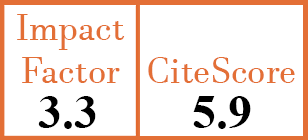Clinical aspects
Predictors of mortality for dermatomyositis patients positive with anti-melanoma differentiation-related gene 5 and optimal treatment
L. Liu1, Y. Zhang2, X. Shu3, C. Wang4, W. Guan5, X. Zhang6, L. Zhang7, X. Liu8, L. Wang9, S. Liu10, T. Li11
- Department of Rheumatology, The First Affiliated Hospital of Zhengzhou University, Zhengzhou, China.
- Department of Rheumatology, The First Affiliated Hospital of Zhengzhou University, Zhengzhou, China.
- Department of Rheumatology, Key Laboratory of Myositis, China-Japan Friendship Hospital, Shanghai, China.
- Department of Gynaecology, The First Affiliated Hospital of Zhengzhou University, Zhengzhou, China.
- Department of Rheumatology, The First Affiliated Hospital of Zhengzhou University, Zhengzhou, China.
- Department of Rheumatology, The First Affiliated Hospital of Zhengzhou University, Zhengzhou, China.
- Department of Rheumatology, The First Affiliated Hospital of Zhengzhou University, Zhengzhou, China.
- Department of Rheumatology, The First Affiliated Hospital of Zhengzhou University, Zhengzhou, China.
- Department of Rheumatology, The First Affiliated Hospital of Zhengzhou University, Zhengzhou, China.
- Department of Rheumatology, The First Affiliated Hospital of Zhengzhou University, Zhengzhou, China. shengyun19690505@163.com
- Department of Rheumatology, The First Affiliated Hospital of Zhengzhou University, Zhengzhou, China. llj1503609@126.com
CER16320
2024 Vol.42, N°2
PI 0246, PF 0252
Clinical aspects
Free to view
(click on article PDF icon to read the article)
PMID: 37199165 [PubMed]
Received: 29/10/2022
Accepted : 03/03/2023
In Press: 15/05/2023
Published: 14/03/2024
Abstract
OBJECTIVES:
To explore the risk factors of early death in dermatomyositis patients positive with anti-melanoma differentiation-related gene 5 antibody (anti-MDA5-DM). To explore the optimal treatment regimen for patients with anti-MDA5-DM.
METHODS:
Patients with newly onset anti-MDA5-DM from June 2018 to October 2021 in our centre were retrospectively reviewed for 6 months. Patients were divided into five groups based on initial treatments. The major outcome was mortality in 6 months. Secondary outcomes included remission and severe infection.
RESULTS:
A total of 214 patients were included in the study. During 6 month follow-up, 63 patients (30.14%) died, 112 patients (53.59%) achieved remission, 52 patients (24.88%) experienced serious infection and 5 patients (2.34%) were lost. Independent risk factors of mortality in the first 6 months after diagnosis were as follows: age> 53 years, skin ulcer, peripheral blood lymphocyte count (LYMP)≤ 0.6×109/L, lactate dehydrogenase (LDH) > 500 U/L, C reactive protein (CRP) > 5mg/L, anti-Ro52 antibody and ground-glass opacity (GGO) score> 2. On the contrary, prophylactic use of the compound sulfamethoxazole (SMZ Co) was independent protective factor. The five-category treatment was not an independent influencing factor of early death, but subgroup analysis found that patients with rapidly progressive interstitial lung disease (RPILD) responded better to a triple combination of high-dose glucocorticoids (GC), calcineurin inhibitors (CNI) and cyclophosphamide (CYC) or a triple combibation of GC, CNI and tofacitinib (TOF).
CONCLUSIONS:
Advanced age, skin ulcer, lymphopenia, anti-Ro52 antibody and higher levels of LDH, CRP and GGO score increase the risk of early death for MDA5-DM, while prophylactic use of SMZ Co is protective. Aggressive therapy with combined immunosuppressants may improve the short-term prognosis of anti-MDA5-DM with RPILD.



